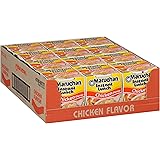The culinary journey presented in the accompanying video offers a vibrant exploration of plant-based gastronomy. It unveils a week’s worth of inspired vegan dinner recipes, transforming everyday ingredients into extraordinary meals. This content extends an invitation to both seasoned plant-based enthusiasts and curious newcomers. It advocates for a kitchen philosophy rooted in adaptability and flavor-forward design. The video’s host provides a blueprint for crafting delicious, health-conscious meals without rigid adherence to recipes.
Our goal is to build upon these foundations. We aim to delve deeper into the methodologies that elevate simple vegan preparations. This approach encompasses strategic meal planning and advanced ingredient manipulation. We seek to analyze the nuanced techniques that create textural masterpieces. Moreover, we will dissect the art of flavor construction, turning ordinary meals into sensory experiences. These principles collectively empower the home chef to master their plant-based kitchen. They enable consistent delivery of satisfying, innovative plant-based dinners.
Strategic Meal Planning for Effortless Plant-Based Dinners
Effective meal planning is the bedrock of a thriving plant-based kitchen. It transcends mere convenience, evolving into a sustainable culinary practice. The video exemplifies this, showcasing a seamless progression of weeknight vegan meals. Such foresight minimizes waste, ensuring every ingredient serves its purpose. It also guarantees a consistent supply of nutritious, delicious food. This systematic approach reduces daily decision fatigue, a common hurdle in meal preparation. It shifts the focus from last-minute scrambling to mindful creation.
Consider your pantry and refrigerator as a culinary ecosystem. Inventorying existing staples before grocery trips is paramount. This prevents duplicate purchases and encourages creative utilization of items on hand. A well-stocked plant-based pantry, rich in legumes, grains, and frozen produce, provides a robust foundation. This strategic management ensures resources are optimized. It fosters a proactive stance against food waste and culinary stagnation. Planning empowers you to approach your vegan dinner recipes with calm confidence.
The Art of Ingredient Substitution and Culinary Innovation
Culinary improvisation is not merely a fallback but a high art. It is the spontaneous jazz solo of the kitchen, born from understanding fundamental principles. The video’s host masterfully demonstrates this, adapting recipes with available ingredients. This flexibility is a hallmark of an expert chef, translating intention into delicious reality. It bypasses rigid adherence, embracing an iterative, responsive cooking style. This approach fosters a deeper connection with ingredients and their potential.
Understanding flavor profiles and textural contributions allows for informed substitutions. For instance, various plant-based grounds offer distinct nuances. Lentils or crumbled tempeh can serve as alternatives, each bringing unique characteristics. Nutritional yeast provides a cheesy umami, unlike any single plant-based cheese. Coconut aminos effectively replace soy sauce with a different sweetness. Embrace this fluidity; it unlocks boundless creative avenues in preparing vegan dinner recipes. Each swap is an opportunity to refine and personalize.
Mastering Textural Dynamics: From Crispy to Creamy
Texture is as vital as flavor in defining a dish’s appeal. The quest for crispy taquitos or succulent tofu highlights this culinary truth. Achieving desired textures in plant-based cooking often requires specific techniques. For optimal crispness in baked taquitos, a generous application of olive oil is crucial. Baking at 400°F ensures a golden, crunchy exterior. For sweet potato fries, an ice bath pre-bake helps, but a light toss in cornstarch prior to baking can dramatically enhance crispness without deep-frying. These methods create an irresistible contrast.
Tofu, a versatile protein, demands nuanced preparation to shine. Freezing tofu directly in its package profoundly alters its cellular structure. This creates a firmer, chewier texture upon thawing and pressing. The removal of excess moisture allows for superior flavor absorption. Some chefs advocate boiling tofu, an alternative method for textural transformation. This prepares the tofu to act as a sponge for marinades and sauces. These deliberate steps unlock tofu’s full potential, making it a star in any array of vegan dinner recipes. Achieving a creamy pasta sauce involves balancing liquids and thickeners. Light coconut milk, combined with dairy-free cream cheese, yields a rich consistency. This blend effectively emulates traditional dairy sauces without the heaviness. Nutritional yeast further contributes to the body and savory depth. Simmering allows flavors to meld and the sauce to thicken naturally. These techniques ensure a satisfying mouthfeel, central to culinary enjoyment.
Flavor Alchemy: Crafting Umami-Rich Vegan Dishes
The creation of bespoke seasoning blends is a cornerstone of advanced vegan cooking. It allows for precise flavor customization, moving beyond pre-packaged solutions. This practice cultivates an intuitive understanding of spices and their synergistic potential. The video’s host champions this approach, developing her own taco seasoning blend. This control ensures freshness and permits adjustment for personal preference or dietary needs. It is an investment in culinary autonomy.
Harnessing umami, the savory fifth taste, is crucial in plant-based cuisine. Ingredients like nutritional yeast, sun-dried tomatoes, and mushrooms are rich in glutamates. These compounds naturally amplify the depth and satisfaction of a dish. Jerk sauce introduces complex heat and aromatic spices. Coconut aminos offer a milder, sweeter counterpoint to traditional soy. Rice vinegar adds brightness and tang. Chili crunch contributes textural excitement and a layered spicy kick. These elements, when combined judiciously, transform simple ingredients into gourmet vegan dinner recipes. A simple dash of fresh basil, as noted in the cashew tofu recipe, can awaken an entire dish. The interplay of fresh herbs with cooked spices creates dynamic flavor landscapes. Ground ginger and garlic powder, when fresh alternatives are unavailable, still provide essential aromatic notes. The skilled chef understands that every ingredient, fresh or dried, plays a vital role in the orchestra of taste. This holistic approach ensures every meal is a symphony of flavors.
Spotlight on Weeknight Vegan Staples
Deconstructed Taquitos: A Crunchy Fiber & Protein Powerhouse
The taquito, a crunchy handheld delight, serves as an excellent vehicle for fiber and protein. The video’s rendition features a robust filling of red and green bell peppers, diced onions, baby Bella mushrooms, and plant-based grounds. This combination offers a spectrum of textures and earthy flavors. A homemade taco seasoning blend further elevates this mixture. These ingredients are sautéed until tender, creating a savory core. The filling is then rolled into corn tortillas and secured. Olive oil spray promotes exceptional crispness during oven baking at 400°F. This high temperature ensures a desirable golden brown finish. Serving with dairy-free sour cream, avocado salsa, and plant-based queso completes this flavorful experience. Consider adding black beans for increased protein and fiber content, enriching the nutritional profile. This simple adjustment deepens the dish’s complexity.
Plant-Based Rasta Pasta: A Spicy, Creamy Indulgence
Rasta pasta, a vibrant and flavorful dish, receives a plant-based transformation. It features protein pasta as a robust carbohydrate and protein source. The recipe incorporates a medley of bell peppers, red onions, garlic, and green onions. These aromatics are sautéed before adding light unsweetened coconut milk. Dairy-free cream cheese provides additional richness and helps achieve a luscious consistency. The dish is spiced with black pepper, mild jerk sauce, thyme, paprika, and garlic powder. Nutritional yeast substitutes traditional cheese, delivering an umami punch. Simmering allows the flavors to meld and the sauce to thicken beautifully. This plant-based rasta pasta stands as a testament to creative adaptation. It delivers a deeply satisfying meal that is both comforting and exhilarating.
Cashew Tofu: A Savory, Tangy Fusion
Cashew tofu represents a masterful plant-based adaptation of a classic. Extra-firm tofu, prepared by freezing and pressing, achieves a remarkably firm texture. This method enhances its ability to absorb a rich, savory sauce. The tofu is broken into bite-sized pieces and marinated with coconut aminos and cornstarch. This forms a protective crust during baking. The sauce itself is an improvisation: hoisin, coconut aminos, rice vinegar, chili crunch, warm water, and cornstarch. This blend yields a complex profile—tangy, salty, and semi-sweet. Baked at 390-400°F (or air-fried), the tofu becomes delightfully crispy. Bell peppers and onions are added during the final baking stage. Cashews are introduced towards the end to prevent burning. Fresh basil, though initially forgotten, adds a crucial aromatic finish. This cashew tofu recipe embodies culinary resourcefulness. It demonstrates that exceptional vegan dinner recipes are achievable with thoughtful substitution.
Loaded Sweet Potato Fries: Elevated Comfort Food
Loaded sweet potato fries redefine comfort food with a plant-based twist. Sweet potatoes are cut and given an ice bath to enhance crispness, then baked. A light cornstarch coating can further improve their texture, creating a desirable crunch. The topping consists of seasoned plant-based grounds combined with fava bean tofu. This mixture provides a hearty, protein-rich foundation. Basic seasonings like garlic powder, onion powder, smoked paprika, cumin, salt, and pepper elevate the savory profile. The fries are generously topped with a warm, cashew-based plant-based queso. This creamy, tangy sauce ties all the elements together. The Credo brand queso, featuring cashews, green chilies, and nutritional yeast, offers a robust flavor. This dish is an assembly of delicious components. It showcases how simple ingredients can create a supremely satisfying experience. These loaded sweet potato fries are a perfect example of gourmet-level vegan dinner recipes that still feel accessible.
Creamy Tuscan Chickpeas: A Mediterranean-Inspired Delight
The creamy Tuscan chickpea dish is a triumph of pantry cooking and flavor layering. It repurposes a single can of chickpeas into a hearty, comforting meal. Red onions are diced and sautéed until tender. Shredded kale and halved cherry tomatoes add freshness and color. Sun-dried tomatoes, along with their oil, infuse the dish with intense, sweet-savory notes. Seasonings include garlic powder, smoked paprika, and a Greek blend (or Italian seasonings). Unsweetened original almond milk forms the creamy base. Dairy-free cream cheese and nutritional yeast further enhance the richness. Vegetable broth provides depth and helps achieve the desired consistency. Simmering allows all flavors to meld into a cohesive, delectable sauce. This dish exemplifies the potential of readily available ingredients. It transforms them into an elegant, comforting meal. These creamy Tuscan chickpeas are a standout among versatile vegan dinner recipes.










